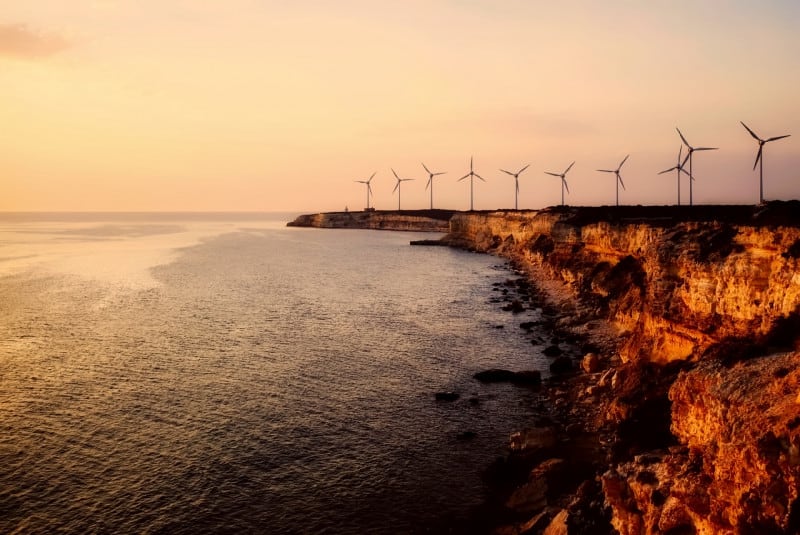Switching to LED bulbs costs a bit more upfront—typically around $2–3 per bulb—but you’ll save greatly over time with up to 75% less energy use and far fewer replacements. Running a single LED for 1,000 hours costs just $1.32 in electricity compared to $6.60 for incandescent. Plus, their long lifespan slashes maintenance. With dropping prices and better efficiency, LEDs deliver robust long-term value for your lighting needs. There’s even more to take into account regarding environmental and market factors.
Key Takeaways
- LED bulbs cost more upfront, but their total cost of ownership is much lower due to long lifespans and minimal replacements.
- LEDs use up to 75% less energy than incandescent bulbs, significantly lowering electricity bills over time.
- Running a 12W LED for 1,000 hours costs about $1.32, compared to $6.60 for a 60W incandescent.
- LEDs require little maintenance, saving money on labor and replacement costs throughout their 25,000–50,000 hour lifespan.
- Bulk purchasing and decreasing market prices have made high-efficiency LED bulbs more affordable for consumers and businesses.
Initial Purchase Price vs. Long-Term Savings
Although LED bulbs often come with a higher upfront cost—ranging from around $2.12 per bulb in bulk to considerably more for specialized applications—their long-term savings far outweigh the initial investment.
LED bulbs may cost more initially, but their substantial long-term savings make them a smart investment for any application.
When conducting a cost comparison, it’s clear that while you pay more initially for LEDs than for traditional incandescent bulbs, the price gap narrows over time. LEDs last thousands of hours longer, reducing replacement frequency and maintenance costs.
For large-scale projects, bulk purchasing further decreases your initial investment per unit. Specialized LEDs may cost more, but their durability and advanced features often justify the premium.
When you take into account fewer replacements and lower operating expenses, the total cost of ownership for LEDs is markedly lower than traditional alternatives.
Comparing Energy Consumption of LEDs and Traditional Bulbs
When you compare the energy consumption of LED bulbs to traditional lighting options, the difference is striking: LEDs use up to 75% less energy than incandescent bulbs for the same level of brightness.
For instance, a 12W LED matches the brightness of a 60W incandescent, but consumes only a fraction of the energy. This energy efficiency translates directly to cost savings—operating a single LED for 1,000 hours costs about $1.32, versus $6.60 for an incandescent, based on average electricity rates.
LEDs also outperform compact fluorescent lamps (CFLs) in energy use, offering even greater efficiency.
For the most practical results, use LEDs where brightness comparison is key, such as kitchens and workspaces, to enhance both energy savings and lighting quality.
Lifespan and Maintenance Considerations
Because LEDs deliver exceptional longevity compared to traditional bulbs, you’ll spend far less time and money replacing them. Most LEDs last 25,000 to 50,000 hours—20 to 50 times longer than incandescents.
However, LED longevity factors like product quality, electrical compatibility, and heat exposure strongly influence real-world lifespan. High temperatures, humidity, and improper installations can reduce performance, so prioritize proper maintenance practices: guarantee good ventilation, avoid incompatible dimmers, and handle bulbs carefully during installation.
LED lifespan depends on quality, installation, and environment—good ventilation and proper handling help maximize performance and reliability.
Choose LEDs from reputable manufacturers who back products with robust warranties. While advertised lifespans often exceed actual results, you can reasonably expect 10 to 20 years of reliable service in typical use.
This dramatically cuts maintenance frequency and long-term costs, making LEDs a practical investment for most environments.
Environmental Impact and Sustainability
Reliable longevity and minimal maintenance set LEDs apart, but their true value extends to substantial environmental benefits.
When you switch to LEDs, you reduce your lighting-related carbon emissions by up to 90% compared to incandescent bulbs. This efficiency means less pressure on power grids and fewer fossil fuel emissions. Yet, to fully realize sustainability gains, you must consider the manufacturing impact and developing recycling options.
- LEDs convert 95% of energy into light, greatly minimizing wasted electricity and associated emissions.
- Long lifespans lead to fewer replacements, reducing landfill waste and material consumption.
- The largest manufacturing impact comes from aluminum heat sinks; newer designs aim to shrink this footprint.
- Although recycling options for LEDs are limited, emerging programs can help offset resource extraction and disposal concerns.
Choose LEDs for lower environmental costs.
Trends in Pricing and Market Adoption
As LED technology matures, prices have plummeted, making high-efficiency lighting more accessible than ever.
You’ve seen LED bulb costs fall from $30 to $10 for a 60W equivalent in just four years, driven by aggressive pricing strategies and intense market competition.
Globally, LED lighting costs dropped 15-fold from 2010 to 2019, with each doubling of production slashing prices by 18%.
In regions like Europe, Ecodesign regulations catalyzed price cuts of up to 90% in five years.
Technological advancements—such as improved manufacturing and economies of scale—have further reduced costs.
However, some specialized components like low-power chips saw recent price upticks.
For you, these trends mean that the cost barrier for adopting LEDs keeps shrinking, making efficient upgrades increasingly practical.
Practical Benefits for Everyday Use
Falling prices have removed much of the hesitation around upgrading to LED lighting, but the benefits go far beyond affordability.
When you consider energy efficiency and cost effectiveness, LEDs offer clear advantages for everyday use. You’ll quickly notice the difference in your utility bills and maintenance routines.
Here’s what makes them a practical choice:
- LEDs use about 75% less energy than incandescent bulbs, resulting in substantial savings.
- Their lifespan is up to 25 times longer, meaning fewer replacements and lower maintenance costs.
- High-quality LEDs convert 95% of energy into light, with minimal heat waste, enhancing overall efficiency.
- Widespread LED adoption could save over 569 TWh annually by 2035, reducing carbon emissions.
Switching to LEDs optimizes both your energy efficiency and long-term cost effectiveness.
Conclusion
When you weigh the upfront costs against long-term savings, LED bulbs clearly come out ahead. They use up to 80% less energy than incandescent bulbs and last 15-25 times longer, slashing both your electricity bills and replacement hassles. With dropping prices and growing market adoption, LEDs offer undeniable value. If you want to reduce maintenance, lower your carbon footprint, and save money over time, switching to LEDs is a practical, data-backed choice.



